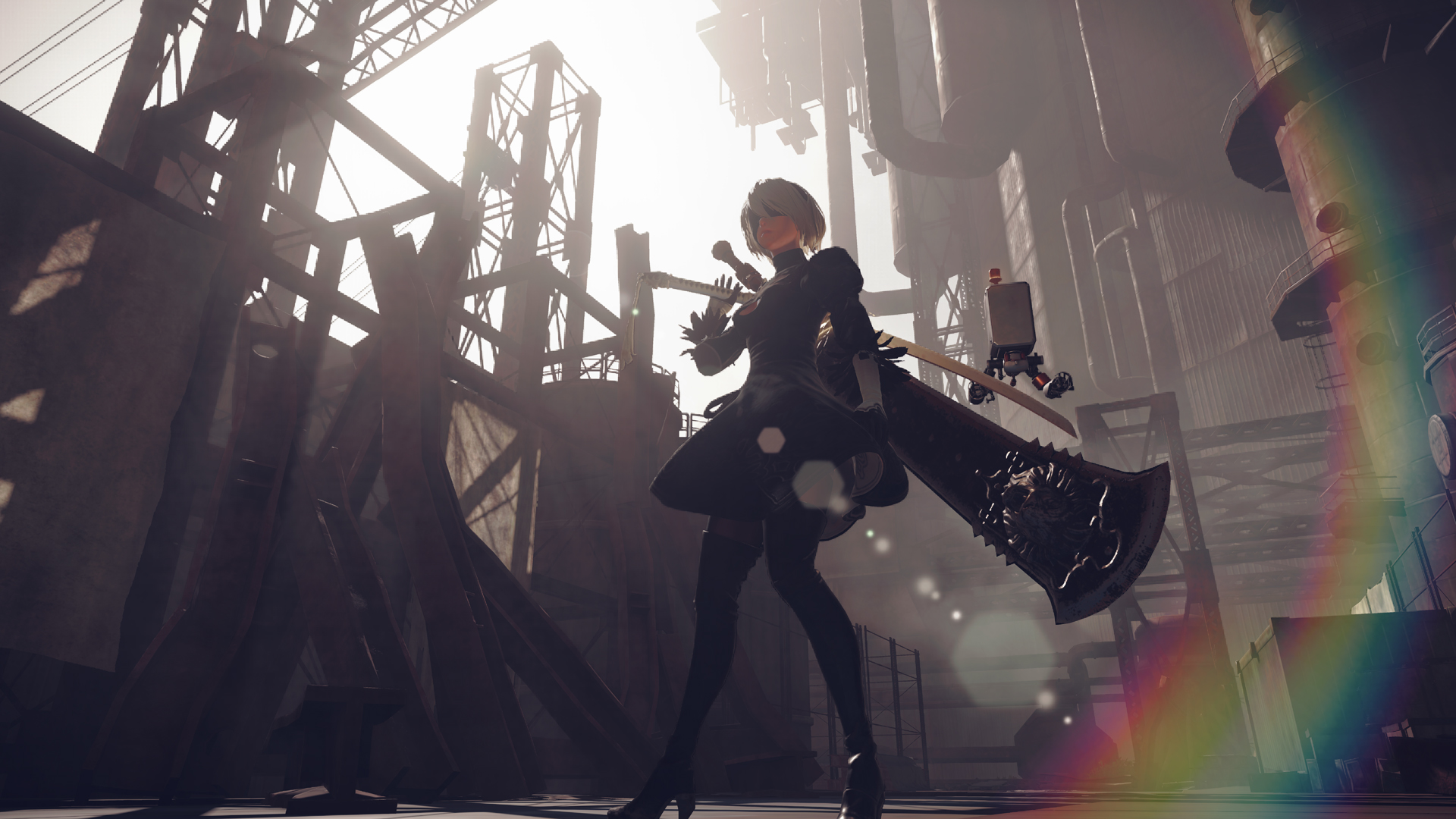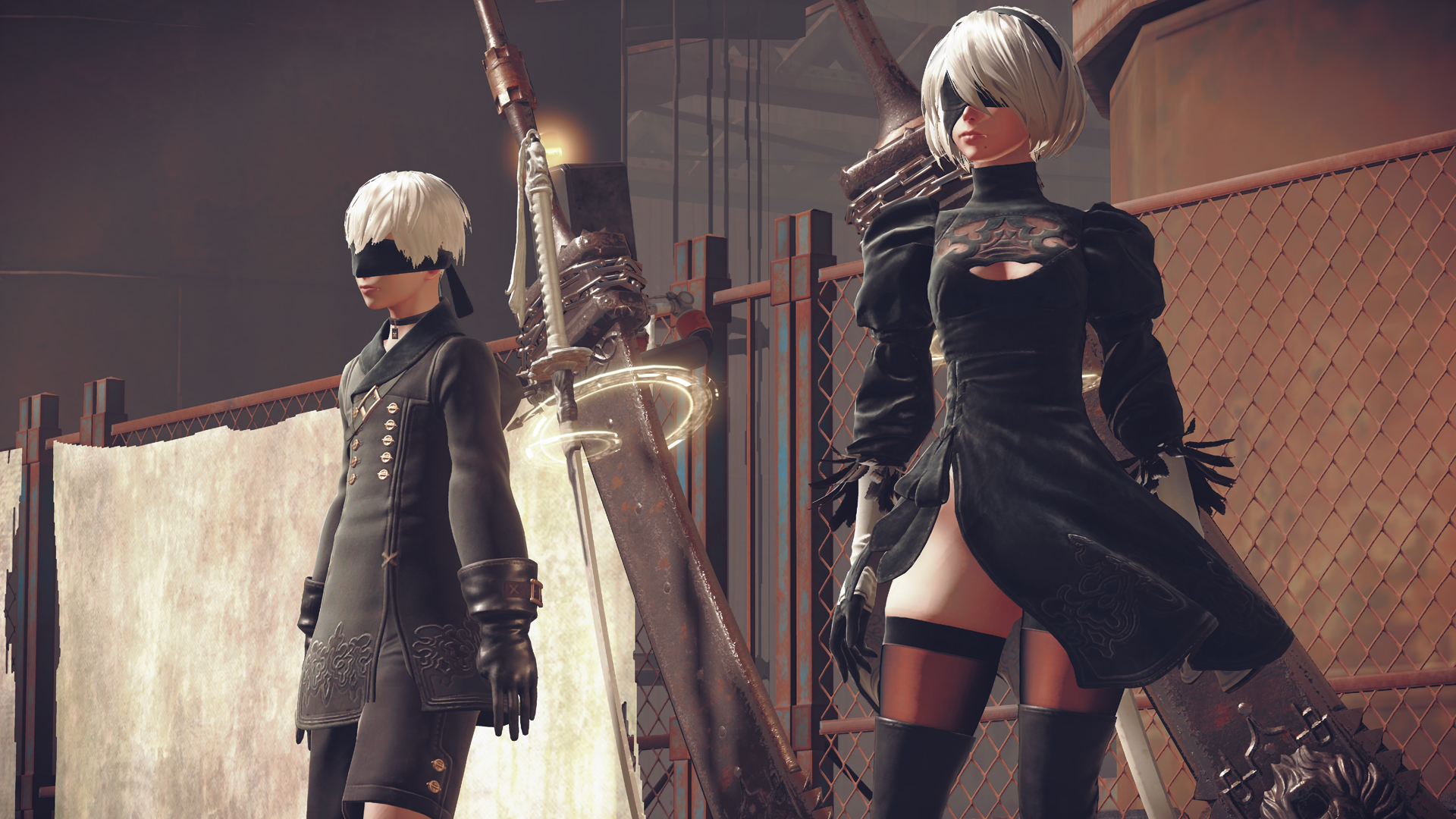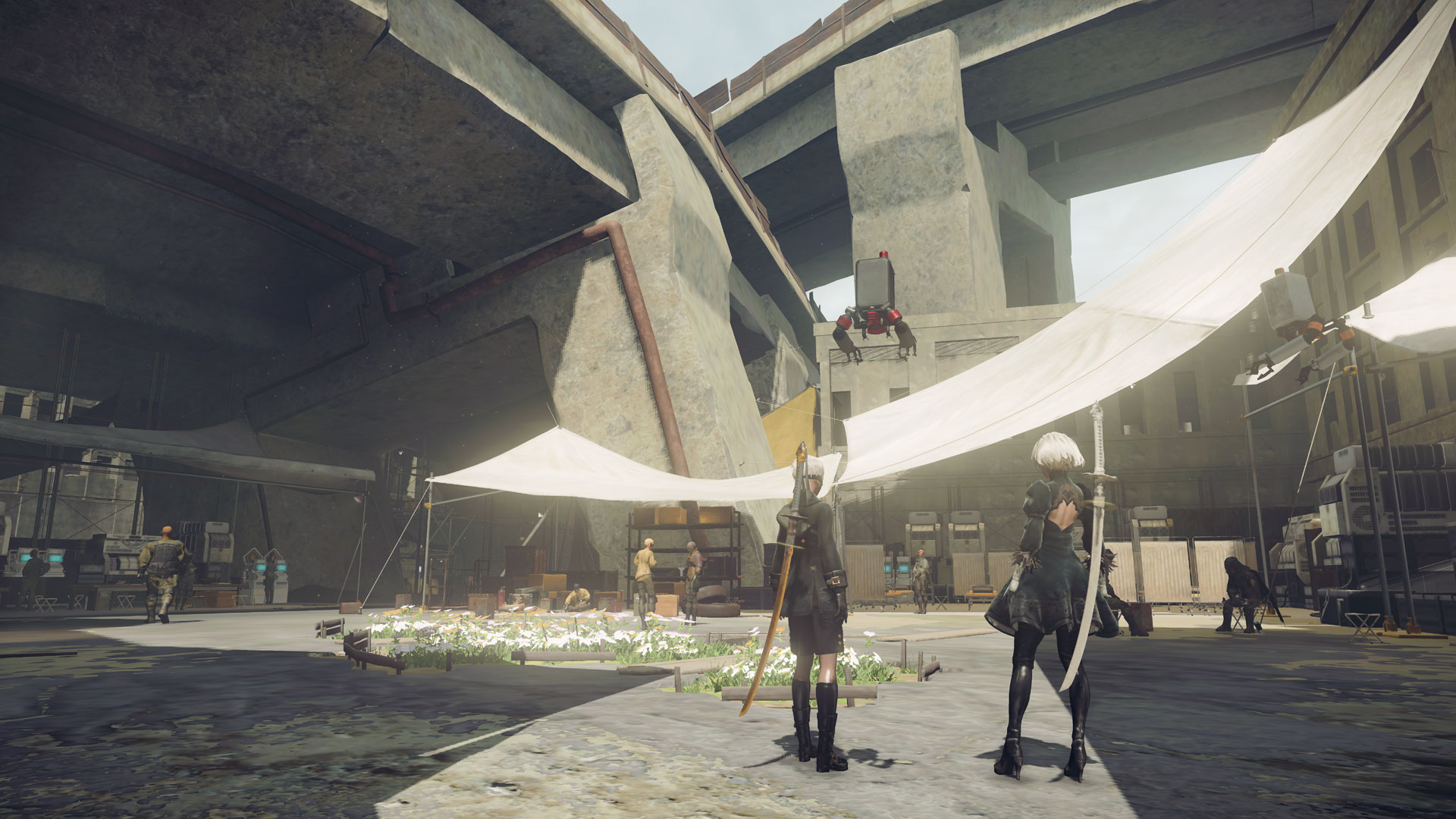Nier: Automata: How a robot-powered action game became a powerful study of human frailty
Now out on Xbox One, this thoughtful, affecting game is worth sticking with to its bitter ends

Let’s face it, Nier: Automata was never likely to offer the friendliest of welcomes. Marrying director Yoko Taro’s obstinacy with PlatinumGames’ fondness for dropping players in at the deep end, the sequel to Cavia’s 2010 cult favourite begins with half an hour of action during which you’re unable to save. As such, if you die at any point, you’ll be whisked back to the very beginning and forced to go through it all over again.
We’ve certainly faced worse setbacks and steeper challenges in our time – and a familiarity with the work of both the game’s creative figurehead and the team choreographing its action meant this didn’t come as a complete surprise. But plenty of those who’d been cajoled into trying Automata wondered whether it was worth the effort. Even the game’s most vocal advocates have taken to suggesting workarounds, and not only for that opening. Game designer Teddy Diefenbach (Hyper Light Drifter) went as far as to start a Twitter thread suggesting the best way to play the game, following negative feedback from friends and acquaintances. “Nier is an incredible, beautiful, fun, important game to our medium.” he wrote. “If it doesn’t fuck you over.”
Nier: Automata's intro is almost like an audience filter

That, in fairness, is a pretty big caveat. Yet once you’re over that initial hump, Nier: Automata frequently goes out of its way to accommodate players – almost as if Taro was hoping to weed out the less committed in order to deliver his message to an audience prepared to put in the early graft. Its combat system should foster deep engagement among anyone versed in PlatinumGames’ earlier work, but with an easy difficulty option and equippable chips to automate attacks and dodges, it allows players to breeze through encounters should they prefer to focus on the story.
In some respects, it’s a pity to play Automata that way – though Taro has always said that combat is never the focus of his games, and though it never quite matches Bayonetta’s peerless kineticism, it has a balletic poise and proves deliciously flexible, particularly on the higher difficulty settings.
And whichever route you choose, Automata’s plug-in chips – surely one of the most ingenious RPG upgrade systems in recent years – gives you an unusual degree of control and choice over everything from how you tackle battles to how many HUD elements you’ll see. You have a limited space in which to slot them, introducing a light puzzle element to the process, as you pick the ones that are most vital to you, whether you’re supplementing your preferred playstyle or compensating for weaknesses. If you’re taking a lot of damage, you can equip defensive buffs and a chip that automatically uses a healing item when your health is low. If you’re finding exploration too slow, you can increase your movement speed and dash distance to get where you’re going much quicker. It gives the player plenty of latitude to experiment in a genre that’s often content to push players down relatively restrictive skill paths.
Nier: Automata wants you to experiment - and fail

In allowing for a degree of creativity, it also leaves the door ajar for some good old- fashioned human error. Attempt to remove the operating system – you are, in all fairness, given a stark warning before you confirm your choice – and it’s game over. Likewise, if you eat a mackerel, your android protagonist’s bodily fluids will congeal, resulting in her death. These are just two of a full alphabet’s worth of different endings, by turn rewarding and punishing human curiosity (and sometimes both at once). Undone by our own poor sense of direction, we inadvertently stumble across another conclusion, which accuses us of straying from our mission, at once highlighting the player’s own free will and the protagonists’ lack of it.
That point of difference is at the very heart of Nier: Automata’s story, which takes place on a ruined future Earth where the last remnants of humankind have fled to the Moon, sending a group of combat androids to battle an army of machine invaders. In truth, plot is less important than theme: Taro is keen to use these events to explore the messy complexities of human nature, with a particular focus on human frailty, and the frightening thought that our own failings might continue to define us long after our departure.
Weekly digests, tales from the communities you love, and more
To do this, he relies upon a similar narrative structure to his previous games, where multiple playthroughs are required to get the full picture. Sometimes that means the same events are presented from a different perspective; at others, fresh knowledge helps us recontextualise our understanding of them. During the first playthrough, we’re cast as 2B: a cold, calculating android, who’s joined by a more personable partner, 9S. Theirs is almost a parent-child relationship: she frequently criticises his behaviour, most notably admonishing him for his curiosity about the machines’ activities, which over time seem increasingly, disturbingly human-like.
How multiple playthroughs enhance the experience

Despite a climax that sees 2B forced to kill 9S after he’s infected by a machine virus, the initial conclusion is curiously flat. But Taro is playing the long game. As a post-credits prompt takes great pains to point out, this isn’t actually the end of the story, with second and third playthroughs producing new twists and revelations. At the third route’s climactic encounter, you’re asked to pick a side; return afterwards to explore the other option, and you can unlock a fourth ending, and then a fifth, which proves altogether final.
If the first run through Nier: Automata is a little underwhelming, that’s partly because we’re asked to play a character who seems unfeeling throughout. Sporadically, glimpses of human behaviour slip through, and they’re not always pleasant. Humanity here is mostly defined by its weaknesses, which even extend to prejudice. 2B’s curt dismissals of 9S’s questions demonstrate a clear hatred of the machines; later, we see her casual othering of her enemy reflected in his own hostile attitude toward them, a stark reminder of how intolerance can be passed down to younger generations.
Love is also seen as a destructive force: 9S’s apparent affection for 2B becomes a consuming fury when he believes she’s been killed. Meanwhile, another machine is driven mad by unrequited love: rejected by another robot, she misinterprets the aesthetic standards that her accumulated knowledge of humans had convinced her would win the affection of her beloved, cannibalising her own kind as a result. It’s a startling discovery that lends poignancy to one of the game’s best boss fights.
Loss, folly and redemption

She’s far from the only machine to suffer. Automata’s saddest tale belongs to a pacifist called Pascal, whose naivety is horribly exposed in a late-game episode. In his desire to protect a group of child machines, he teaches them the value of fear as a survival mechanism, to ensure they don’t blunder into danger; tragically, when trouble flares, they become so frightened that they all commit suicide. In a grim twist, he’ll ask you to kill him or erase his memory banks: the latter might seem like an act of mercy, to prevent him living with the guilt of his actions, but do so and he’ll become a vendor selling machine parts – including the cores of the recently deceased.
"A seemingly impossible final challenge requires you to rely on the help of others"
If that all sounds like heavy going, Taro has one more surprise that strikes an oddly hopeful final note. With Endings A-D obtained, another playthrough of the last chapter invites you to make a sacrifice for the greater good. It’ll likely have more impact if you haven’t played the original Nier, which offered an even crueller (and possibly better) riff on a similar idea. There, to save an NPC, you were asked to let your save file be erased: to further underline the punishment, you were left unable to use the same character name again, as a permanent reminder that they and their actions – and, by extension, you and yours – had been forgotten.
In Automata, a seemingly impossible final challenge requires you to rely on the help of others who’ve previously uploaded their own data; you, in turn, are asked to give up yours to assist future players struggling through the same objective. This feels like a more performative, self-congratulatory kind of selflessness – even when, as every save file and menu option is methodically removed before our eyes, we experience a similar feeling of loss.
A parable of faith relayed through the game's structure

And yet this process also imparts a tangible value on the player’s actions: your data will, in all likelihood, help others reach the true ending. That is, Taro suggests, the kind of purpose we need in our lives – just as the machines try to replicate human behaviour as a way to find meaning in their existence, and the androids perpetuate a ruse to keep their own kind motivated. And despite an apparent distaste for organised religion, it’s clear Automata understands the importance of faith. The final exchange, between the androids’ support pods, sees the three protagonists about to be reconstructed: though there’s every chance that history will simply repeat itself, the pods firmly believe there’s a chance that things might just be different this time around.
In giving its players a cause worth fighting for, it’s no wonder Nier: Automata has attracted a following so willing to argue its corner. As such, all those who’ve demanded we reconsider our review score – the cause of the most quizzically raised eyebrows and angry correspondence since Mario Kart: Double Dash – can consider themselves forgiven. Even if it does “fuck you over”, this thoughtful, affecting and strikingly provocative game is undoubtedly worth sticking with to its bitter ends.
This article originally appeared in Edge magazine. For more great coverage, you can subscribe here.

Chris is Edge's former deputy editor, having previously spent a decade as a freelance critic. With more than 15 years' experience in print and online journalism, he has contributed features, interviews, reviews and more to the likes of PC Gamer, GamesRadar and The Guardian. He is Total Film’s resident game critic, and has a keen interest in cinema. Three (relatively) recent favourites: Hyper Light Drifter, Tetris Effect, Return Of The Obra Dinn.


